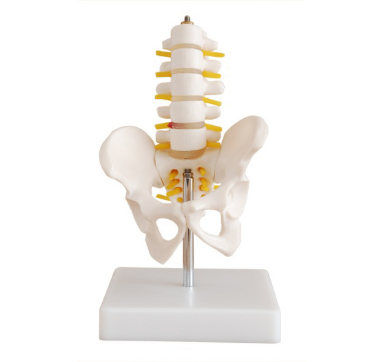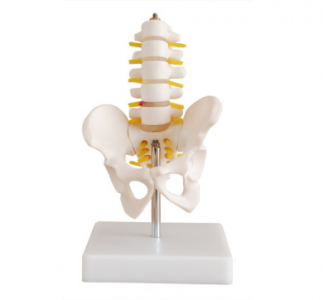In the modern medical field, the lumbar spine with tail vertebra model provides a strong support for precision medicine with its characteristics of accurately simulating the structure of human lumbar spine and tail vertebra. This model not only helps doctors to diagnose the disease more accurately, but also plays an important role in surgical planning, rehabilitation training and patient education.

First, accurate simulation, real restoration
Through precise design and manufacture, the anatomical structure of lumbar spine and tail vertebra can be accurately reconstructed. From the shape and size of the bones to the way the joints are connected, the model is highly simulated. This allows doctors to visually observe the fine structure of the lumbar and coccygeal vertebrae and better understand their physiological and pathological changes.
Second, help accurate diagnosis
In the diagnosis process, the doctor can more accurately judge the condition through the model of the lumbar vertebra with the tail vertebra, combined with the patient's symptoms and imaging results. Especially for common diseases such as lumbar disc herniation and lumbar fracture, the model can help doctors more intuitively understand the location and degree of the lesion, and provide a strong basis for the development of treatment plans.
3. Assisted surgical planning
When performing lumbar surgery, the doctor needs to fully understand the anatomy of the lumbar spine and the tail vertebra to ensure the smooth operation. The model of lumbar vertebra with tail vertebra can provide doctors with a three-dimensional platform for surgical planning. Doctors can simulate the operation on the model, predict the operation effect, optimize the operation plan, and reduce the operation risk.
Fourth, promote rehabilitation training
For patients with lumbar spine disease, rehabilitation training is an important link to restore health. The model of lumbar vertebra with tail vertebra can provide patients with an intuitive learning tool to help them understand the structure and function of lumbar vertebra and tail vertebra, and master the correct rehabilitation training method. At the same time, the model can also be used to evaluate the rehabilitation effect of patients and provide a basis for adjusting the rehabilitation plan.
5. Patient education
Lumbar band tail vertebral models can also be used for patient education. By presenting the model to the patient, the physician can visually explain the anatomy of the lumbar and coccygeal vertebrae, disease causes, and treatment methods, improving the patient's disease awareness and treatment compliance. This helps patients better cooperate with treatment and speeds up the recovery process.

